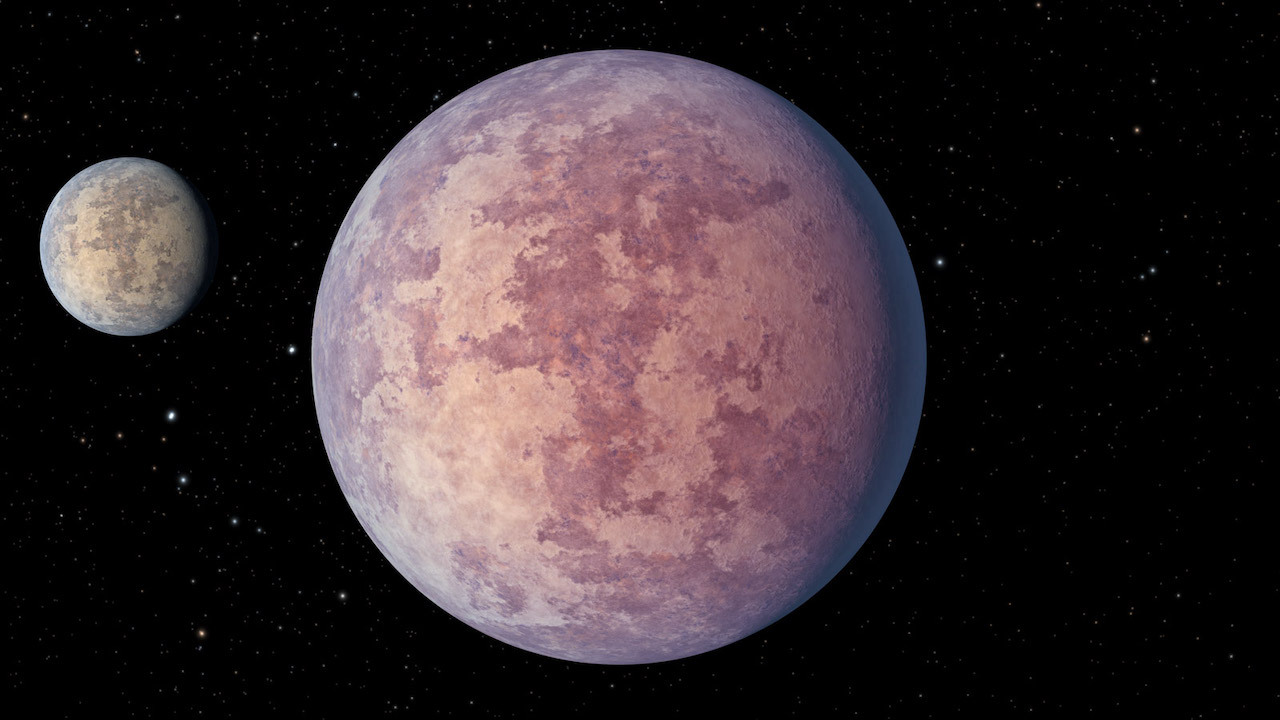TESS has struck paydirt again. NASA’s planet-hunting spacecraft has found two new super-Earths orbiting a star only 33 light-years away. These are two of the closest rocky planets ever found.
The star’s name is HD 260655. It’s a bright M dwarf star, sometimes called a red dwarf. Both planets are rocky super-Earths, and though the word “Earth” is suggestive, neither world is likely to support life due to their extremely high temperatures. But scientists still think they’re worthy of further observations.
A new paper titled “The HD 260655 system: Two rocky worlds transiting a bright M dwarf at 10 PC” announced the discovery. The lead author is Rafael Luque of the Institute of Astrophysics of Andalusia, Spain, and the University of Chicago. The journal Astronomy and Astrophysics will publish the paper, but it’s currently available online at the pre-press site arxiv.org.
HD 260655b is closest to the star with an orbital period of 2.7 days. Its radius is 1.2 Earth radii, and its mass is 2.14 Earth masses.
HD 260655c has an orbital period of 5.7 days. Its radius is 1.5 Earth radii, and its mass is 3.09 Earth masses.
Their temperatures are almost certainly too high to support any life. Planet b’s temperature is approximately 435 Celsius (816 Fahrenheit), and planet c’s temperature is about 284 Celsius (543 Fahrenheit.) Those temperature estimates are dependent on any atmospheres the planets may have.
Their potential atmospheres are part of what makes these planets interesting.
“The HD 260655 system presents a unique opportunity for comparative planetology studies of rocky worlds.”
From “The HD 260655 system: Two rocky worlds transiting a bright M dwarf at 10 PC.”
When the James Webb Space Telescope begins science operations (soon, people, soon), it’ll have the capability to examine the atmospheres of exoplanets like these. The results will show us how different rocky planets can be from each other and will provide clues to how rocky planets form.
The opportunity to study two rocky planets in the same system is too good to pass up.
“Multiplanetary systems offer a unique opportunity for characterization via comparative planetology, as
they have formed within the same protoplanetary disk,” the authors write. And since the host star is so small, only about 0.4 solar masses, the super-Earths exhibit more influence on it. This makes measuring the planets’ masses and densities easier.
The star is a red dwarf, and it’s much dimmer than a star like our Sun. But for its type, HD 260655 is pretty bright. “It is among the brightest early-type M dwarfs in the sky, with an apparent magnitude in the J band of 6.7 mag.,” the authors write. The J-band is in the near-infrared, part of the electromagnetic spectrum that James Webb is designed to observe.
And at only 33 light-years away, the JWST easily has the power to examine the planets’ atmospheres spectroscopically. The telescope’s Near-Infrared spectrograph (NIRSpec) can perform three types of spectroscopic observations in the NIR. It can obtain the spectra of over 100 targets simultaneously in one of its modes. Combined with its other instruments and modes, no exoplanet atmosphere will be safe. Certainly none at this distance anyway.
But decisions on which planets are suitable for atmospheric characterization by the JWST come down to specific metrics. The authors computed two values for these rocky exoplanets and compared them to their peers in NASA’s Exoplanet Archive. The values are the Transmission Spectroscopy Metric (TSM) and Emission Spectroscopy Metric (ESM.) Both planets are in the top quartile of desirable targets for JWST spectroscopy. HD 260655 b is among the top 10 terrestrial planets for atmospheric characterization. (Note that in this metric, the inner planet (HD 260655 b) is considered a terrestrial planet and the outer planet (HD 260655 c) is regarded as a super-Earth/sub-Neptune.)
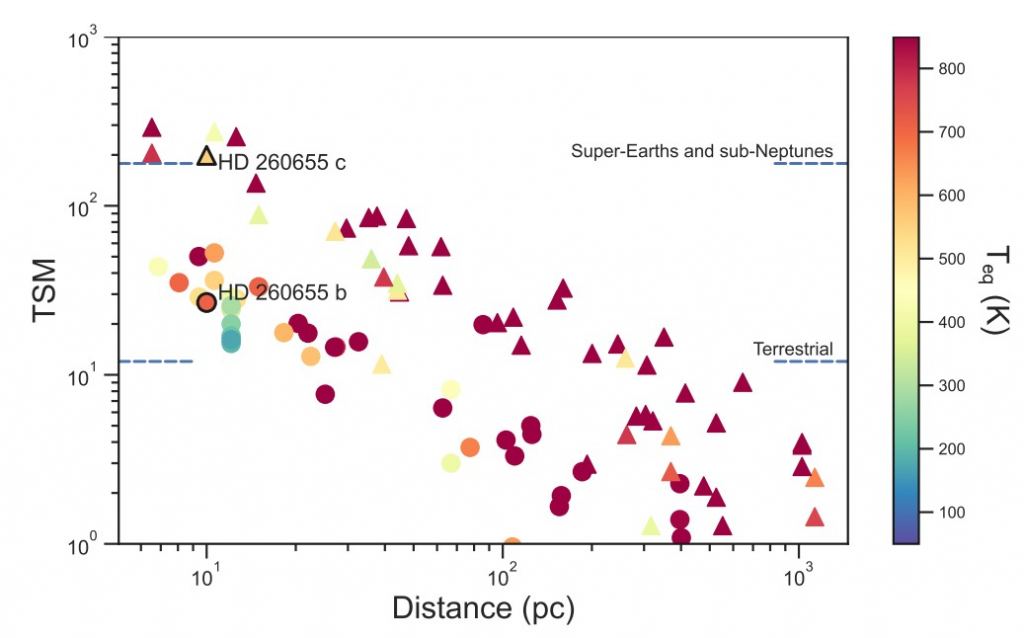
For these reasons, the team behind this discovery says that the pair of super-Earths are among the top 10 terrestrial exoplanet candidates for atmospheric characterization. There’s no certainty that the planets have atmospheres, but there’s some reason to believe they do. Because even though they were discovered with TESS, which detects exoplanet transits, the team used data from other ground-based facilities to learn as much as possible.
The team measured the wobble exhibited by the star as the orbiting planets tugged on it. Those measurements reveal the planets’ masses. By combining their masses with their sizes, the researchers found their densities. That led to the conclusion that they’re rocky planets. It also means that if the planets do have atmospheres, they’re likely not extended hydrogen atmospheres.
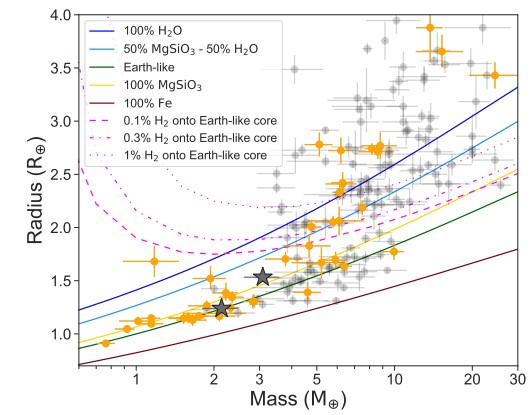
The team surmised that the inner planet, HD 260655 b, has a bulk density composition in perfect agreement with Earth’s. But planet c is different. “HD 260655 c is more consistent with an internal composition void of iron and fully made of silicates if it is assumed to be free of volatiles,” the paper states. The team says that the density difference between the planets is either due to different concentrations of volatiles or to observational uncertainties.
Another interesting fact about these planets concerns what exoplanet scientists call the small planet radius gap. It’s an “… observed scarcity of planets with radii between 1.5 and 2 times Earth’s radius,” as Wikipedia defines it. Scientists think that the gap could be due to photoevaporation. Different researchers have defined the gap differently in terms of planet radii, but both planets in the system are less than 1.5 Earth radii. This suggests that both worlds have lost their atmospheres, which is expected for planets this close to their stars.
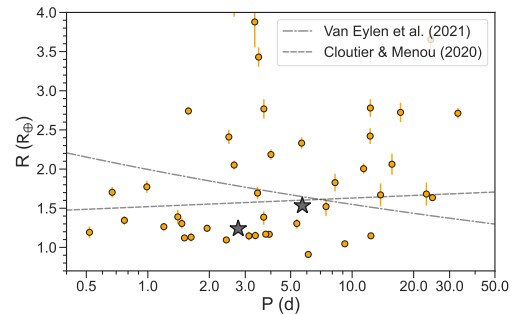
This paper shows that planet c’s atmosphere, if it had one, was likely a Hydrogen/Helium atmosphere that was stripped away. But if they’re wrong about the composition, and it’s more like Earth’s, then it may have held on to a water-dominated atmosphere.
Planet b is different. Since it’s so much closer to its star, it’s unlikely to have much of an atmosphere. In both cases, if the planets have atmospheres, they’re highly unlikely to have extended hydrogen atmospheres.
These planets are not targets in the search for life. They’re too hot. But they’re scientifically desirable targets in other ways. “The HD 260655 system presents a unique opportunity for comparative planetology studies of rocky worlds,” the authors write. As pointed out earlier, they’re both prime targets for follow-up spectroscopy with the JWST. “These follow-up observations will improve our knowledge about the formation and evolution history of the system,” the authors write. Those observations could “… open a new observational avenue to study the magnetic fields of low-mass stars and their imprint in planetary systems.”
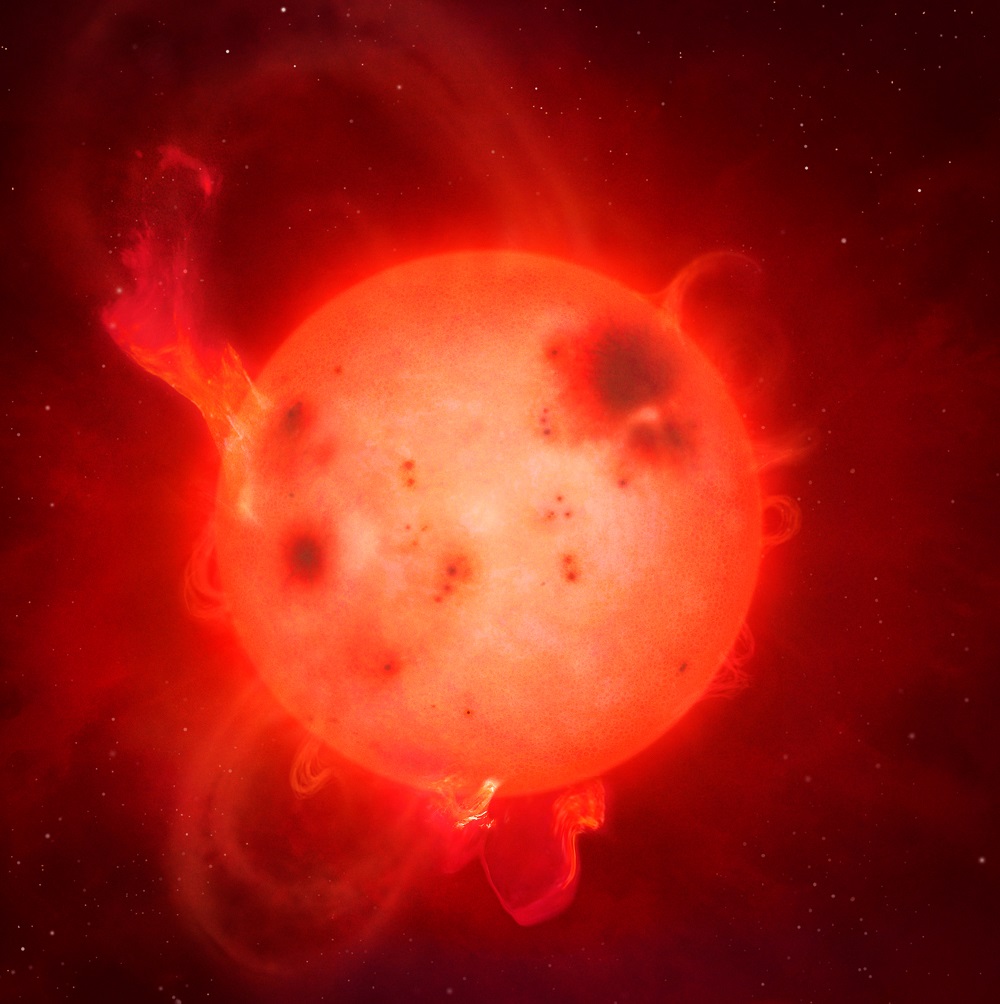
Evidence from HARPS (High Accuracy Radial Velocity Planet Searcher) shows that 40% of red dwarfs host Earth-like planets in their habitable zones. The problem is that red dwarfs can flare violently, rendering their habitable zone uninhabitable, or so we think. But we just don’t have a complete picture.
So while these two planets are far too hot for surface water and life, astronomers can use them to learn more about all those other planets orbiting all those other red dwarfs.

